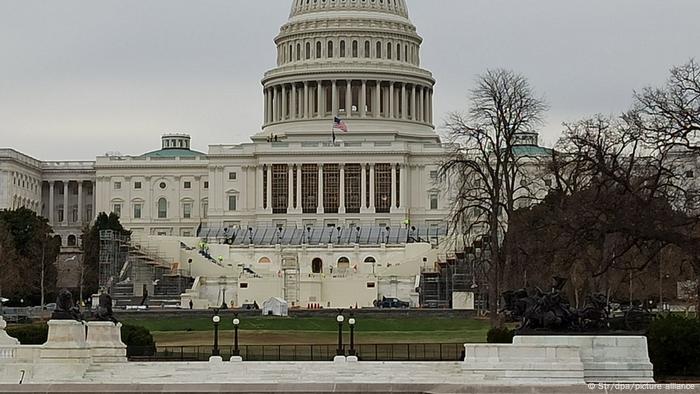 The Weather Network
The Weather NetworkThe surprising winter upset, Texas out-snowing major Canadian cities
It’s possible that I shall make an ass of myself. But in that case one can always get out of it with a little dialectic. I have, of course, so worded my proposition as to be right either way (K.Marx, Letter to F.Engels on the Indian Mutiny)











 Somewhere in Southwestern North America during the late Pleistocene, a pack of dire wolves (Canis dirus) are feeding on their bison kill, while a pair of grey wolves (Canis lupus) approach in the hopes of scavenging. One of the dire wolves rushes in to confront the grey wolves, and their confrontation allows a comparison of the bigger, larger-headed and reddish-brown dire wolf with its smaller, grey relative. Credit: Mauricio Antón
Somewhere in Southwestern North America during the late Pleistocene, a pack of dire wolves (Canis dirus) are feeding on their bison kill, while a pair of grey wolves (Canis lupus) approach in the hopes of scavenging. One of the dire wolves rushes in to confront the grey wolves, and their confrontation allows a comparison of the bigger, larger-headed and reddish-brown dire wolf with its smaller, grey relative. Credit: Mauricio Antón 
Twitter and Facebook shares slide amid US violence backlash
Technology companies tried to contain a mounting backlash against their social media sites, with shares of Twitter and Facebook falling and rival platform Parler forced offline by Amazon.
Many conservatives said the moves to expunge US president Donald Trump from the social networks and take down an app popular with his supporters went too far. Twitter shares were down sharply, reflecting shareholder uncertainty about the permanent removal of one of the site’s biggest accounts and the legislative consequence that could follow. Facebook’s shares also fell during the session.
Parler, whose chief executive John Matze pitches the network as a safe place for free speech, went down early today after Amazon Web Services shut off access to its servers, leaving it without a home.
Both Google and Apple kicked Parler from their stores, making it almost impossible to download the app.
The big tech companies justified their actions by citing posts stoking riots in Washington DC last week and sought to avoid further incitements to violence.
The bans underscore the power these companies hold over how information is disseminated and the impact their decisions have.
Previously, it was their stance to allow incendiary speech from Mr Trump and his allies that drew heavy criticism from the left.
Regulatory risks for social media companies will persist even though Democrats will control the Congress and White House, wrote Bank of America analyst Justin Post in a note to clients.
Meanwhile, Parler has so far been unable to find other web hosting services willing to step in, because of the negative publicity stemming from the violence, organised in part on its own platform.
“This is not due to software restrictions, we have our software and everyone’s data ready to go,” said Mr Matze.
“Rather, it’s that Amazon’s, Google’s, and Apple’s statements to the press about dropping our access has caused most of our other vendors to drop their support for us as well.”
Even some e-commerce and payments sites are now reassessing doing business with companies linked to Mr Trump. Stripe will stop processing payments for Mr Trump’s campaign website, according to a person familiar with the decision. Shopify shut down online stores affiliated with Mr Trump.
Before last week’s violence, lawmakers and civil rights advocates had long been pressuring social media platforms to crack down on posts that encourage violence or hatred.
While regulators in Europe have passed laws fining companies that fail to act on hate speech, the US has largely left regulation to the companies. Twitter first put warning labels on Mr Trump’s tweets that supported the Capitol rioters, then hid them, before suspending the account.



ORAL FIXATIONS
Youth using e-cigarettes three times as likely to become daily cigarette smokers
Age at first use and number of tobacco products consumed also increases addiction risk
UNIVERSITY OF CALIFORNIA - SAN DIEGO
An analysis of a large nationally representative longitudinal study by University of California San Diego Herbert Wertheim School of Public Health and Human Longevity Science report that starting tobacco products, including e-cigarettes, before the age of 18 is a major risk factor for people becoming daily cigarette smokers.
Reporting in the January 11, 2021 online edition of Pediatrics, researchers found that in 2014 people age 12 to 24 who used e-cigarettes were three times as likely to become daily cigarette smokers in the future. Among those who reported using a tobacco product, daily use increased with age through age 28. Daily cigarette smoking nearly doubled between 18 to 21 year olds (12 percent) and 25 to 28 year olds (21 percent).
"This is the first paper that actually looks at progression to dependent cigarette smoking among young adults. In these data, e-cigarettes are a gateway for those who become daily cigarette smokers," said the study's first author, John P. Pierce, PhD, Professor Emeritus at Herbert Wertheim School of Public Health and Human Longevity Science and UC San Diego Moores Cancer Center. "The start product has changed from cigarettes to e-cigarettes, but the end product has stayed the same. When users become dependent on nicotine, they are converting to cigarette smoking."
Researchers used data from the Population Assessment of Tobacco and Health (PATH) Study, a longitudinal study of tobacco use and its effect on the health of people in the United States. The PATH Study, undertaken by the National Institute on Drug Abuse (NIDA) and the FDA Center for Tobacco Products under contract to Westat, enrolled a nationally representative sample of 12 to 24 year olds between in 2013 and 2014 and re-interviewed them annually for four years to explore progression to daily use among experimenters of 12 tobacco products.
In the first year, 45 percent of study participants reported using at least one tobacco product in their lifetime. By the fourth year, as participants aged, 62 percent reported some tobacco experimentation. Among those who have ever experimented with tobacco, 73 percent had tried cigarettes and 72 percent had tried e-cigarettes. Further, more than half tried hookahs and cigarillos. Traditional cigars, filtered cigars, smokeless products, pipes and snus were each tried by more than10 percent of study participants.
The analyses revealed that, by year four, 12 percent of participants were using tobacco products daily -- half of whom became daily users after the first year. Seventy percent of daily users smoked cigarettes and most of them (63 percent) used cigarettes exclusively. Of those who smoked cigarettes and used another tobacco product, half vaped e-cigarettes on a non-daily basis.
Among the 17 percent of daily users who were vaping every day, almost half were also non-daily cigarette smokers. Further follow-up will determine whether these young daily tobacco users continue to use both products or whether they settle on a single product, said Pierce.
"What we're seeing is that the proportion who are daily e-cigarette users did not increase with age. Whereas with cigarettes the number of users jumps up rapidly with age," said Pierce. "This rapid increase with age only occurred with cigarettes, not with any other tobacco products."
Less than 1 percent of study participants who experimented with just one tobacco product progressed to daily cigarette smoking. People who had tried five or more products increased their risk of becoming daily cigarette smokers by 15 percentage points.
"Trying e-cigarettes and multiple other tobacco products before the age of 18 is also strongly associated with becoming daily cigarette smoking," said senior author Karen Messer, PhD, professor at UC San Diego Herbert Wertheim School of Public Health and Human Longevity Science and director of biostatics at UC San Diego Moores Cancer Center.
"We know that e-cigarette use among high school seniors, most under the age of 18, increased from 38 percent in 2016 to 45 percent in 2019. These results suggest that recent rapid growth in adolescent e-cigarette use will lead to increased daily cigarette smoking among young adults in the United States, reversing decades of decline in cigarette smoking."
###
Co-authors include: Ruifeng Chen, Eric C. Leas, Martha M. White, Sheila Kealey, Matthew D. Stone, Tarik Benmarhnia, Dennis R. Trinidad and David R. Strong, all of UC San Diego.
FALSE EQUIVALENCIES
Marijuana smoking found to raise levels of potentially harmful chemicals but to a lesser degree than tobacco smoking; Exposure to a toxic chemical associated with heightened risk for cardiovascular disease increases with tobacco smoking
DANA-FARBER CANCER INSTITUTE

IMAGE: MARIJUANA PLANT view more
CREDIT: PEXELS
Scientists at Dana-Farber Cancer Institute and the Centers for Disease Control and Prevention have uncovered new evidence of the potential health risks of chemicals in tobacco and marijuana smoke.
In a study published online today by EClinicalMedicine, the researchers report that people who smoked only marijuana had several smoke-related toxic chemicals in their blood and urine, but at lower levels than those who smoked both tobacco and marijuana or tobacco only. Two of those chemicals, acrylonitrile and acrylamide, are known to be toxic at high levels. The investigators also found that exposure to acrolein, a chemical produced by the combustion of a variety of materials, increases with tobacco smoking but not marijuana smoking and contributes to cardiovascular disease in tobacco smokers.
The findings suggest that high acrolein levels may be a sign of increased risk of cardiovascular disease and that reducing exposure to the chemical could lower that risk. This is particularly important for people infected with HIV, the virus that causes AIDS, given high rates of tobacco smoking and the increased risk of heart disease in this group.
"Marijuana use is on the rise in the United States with a growing number of states legalizing it for medical and nonmedical purposes - including five additional states in the 2020 election. The increase has renewed concerns about the potential health effects of marijuana smoke, which is known to contain some of the same toxic combustion products found in tobacco smoke," said the senior author of the study, Dana Gabuzda, MD, of Dana-Farber. "This is the first study to compare exposure to acrolein and other harmful smoke-related chemicals over time in exclusive marijuana smokers and tobacco smokers, and to see if those exposures are related to cardiovascular disease."
The study involved 245 HIV-positive and HIV-negative participants in three studies of HIV infection in the United States. (Studies involving people with HIV infection were used because of high tobacco and marijuana smoking rates in this group.) The researchers collected data from participants' medical records and survey results and analyzed their blood and urine samples for substances produced by the breakdown of nicotine or the combustion of tobacco or marijuana. Combining these datasets enabled them to trace the presence of specific toxic chemicals to tobacco or marijuana smoking and to see if any were associated with an increased risk of heart disease.
The investigators found that participants who exclusively smoked marijuana had higher blood and urine levels of several smoke-related toxic chemicals such as naphthalene, acrylamide, and acrylonitrile metabolites than non-smokers did. However, the concentrations of these substances were lower in marijuana-only smokers than in tobacco smokers.
Investigators also found that acrolein metabolites - substances generated by the breaking down of acrolein - were elevated in tobacco smokers but not marijuana smokers. This increase was associated with cardiovascular disease regardless of whether individuals smoked tobacco or had other risk factors.
"Our findings suggest that high acrolein levels may be used to identify patients with increased cardiovascular risk," Gabuzda said, "and that reducing acrolein exposure from tobacco smoking and other sources could be a strategy for reducing risk."
###
The first author of the study is David R. Lorenz, PhD, of Dana-Farber. Co-authors are Vikas Misra, MSc, Sukrutha Chettimada, PhD, and Hajime Uno, PhD, of Dana-Farber; Lanqing Wang, PhD, Benjamin C. Blount, PhD, and Vi?ctor R. De Jesu?s, PhD, of the Centers for Disease Control and Prevention; Benjamin B. Gelman, MD, PhD, of the University of Texas; Susan Morgello, MD, of Icahn School of Medicine; and Steven M. Wolinsky, MD, of Northwestern University.
The study was supported by the National Institutes of Health (grants R01 DA040391 and DA046203); the National Institute of Mental Health (NIMH) and National Institute of Neurological Disorders and Stroke (NINDS) (grants U24MH100931, U24MH100930, U24MH100929, U24MH100928, U24MH100925, MH062512, HHS-N-271-2010-00036C, and HHSN271201000030C); the National Institute of Allergy and Infectious Diseases (grants U01- AI35039, U01-AI35040, U01-AI35041, U01- AI35042, and UM1-AI35043); the National Cancer Institute; National Institute on Drug Abuse; and National Institute of Mental Health. MACS data collection is also supported by UL1- TR000424.

 Article 196 of Poland's criminal code prohibits offending religious sentiment Wojtek RADWANSKI AFP/File
Article 196 of Poland's criminal code prohibits offending religious sentiment Wojtek RADWANSKI AFP/File

